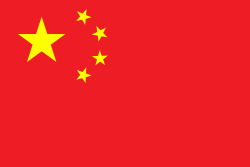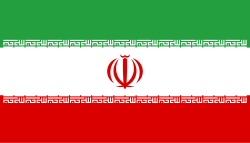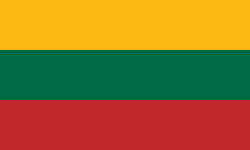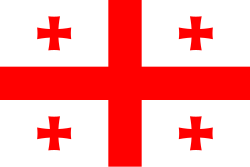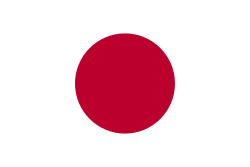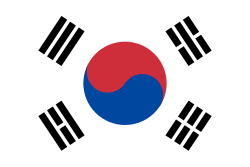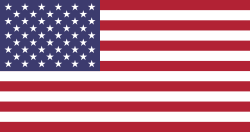Vzpírání na Letních olympijských hrách 2016
| Vzpírání na Letních olympijských hrách 2016 | ||||||||||||||||||
|---|---|---|---|---|---|---|---|---|---|---|---|---|---|---|---|---|---|---|
| Základní údaje | ||||||||||||||||||
| Pořadatel | Mezinárodní vzpěračská federace Mezinárodní olympijský výbor | |||||||||||||||||
| Dějiště | Riocentro - pavilon 2 | |||||||||||||||||
| Datum | 6. srpna - 16. srpna 2016 | |||||||||||||||||
| Soutěže | 15 (8 muži, 7 ženy) | |||||||||||||||||
| Startující | 260 z 94 zemí | |||||||||||||||||
| Soutěže | ||||||||||||||||||
| ||||||||||||||||||
| ||||||||||||||||||
Vzpěračské soutěže na Letních olympijských hrách 2016 v Riu de Janeiro se konaly od 6. srpna do 16. srpna.
Medailisté
Muži
| Kategorie | výsledek | výsledek | výsledek | |||
| do 56 kg | Čína (CHN) | 307 kg SR (137 + 170 OR) | Severní Korea (PRK) | 303 kg (134 + 169) | Thajsko (THA) | 289 kg (132 + 157) |
| do 62 kg | Kolumbie (COL) | 318 kg (142 + 176) | Indonésie (INA) | 312 kg (142 + 170) | Kazachstán (KAZ) | 305 kg (135 + 170) |
| do 69 kg | Čína (CHN) | 352 kg (162 + 190) | Turecko (TUR) | 351 kg (163 + 188) | Kolumbie (COL) | 338 kg (155 + 183) |
| do 77 kg | Kazachstán (KAZ) | 379 kg (165 + 214 SR) | Čína (CHN) | 379 kg (177 SR + 202) | Egypt (EGY) | 361 kg (165 + 196) |
| do 85 kg | Írán (IRI) | 396 kg SR (179 + 217) | Čína (CHN) | 395 kg (178 + 217 OR) | Rumunsko (ROU) | 390 kg (173 + 217) |
| do 94 kg | Írán (IRI) | 403 kg (182 + 221) | Bělorusko (BLR) | 395 kg (175 + 220) | Litva (LTU) | 392 kg (177 + 215) |
| do 105 kg | Uzbekistán (UZB) | 431 kg (194 + 237 OR) | Arménie (ARM) | 417 kg (190 + 227) | Kazachstán (KAZ) | 416 kg (193 + 223) |
| nad 105 kg | Gruzie (GEO) | 473 kg SR (215 + 258) | Arménie (ARM) | 451 kg (210 + 241) | Gruzie (GEO) | 448 kg (207 + 241) |
Ženy
| Kategorie | výsledek | výsledek | výsledek | |||
| do 48 kg | Thajsko (THA) | 200 kg (92 + 108) | Indonésie (INA) | 192 kg (85 + 107) | Japonsko (JPN) | 188 kg (81 + 107) |
| do 53 kg | Tchaj-wan (TPE) | 212 kg (100 + 112) | Filipíny (PHI) | 200 kg (88 + 112) | Jižní Korea (KOR) | 199 kg (88 + 111) |
| do 58 kg | Thajsko (THA) | 240 kg (110 OR + 130) | Thajsko (THA) | 232 kg (102 + 130) | Tchaj-wan (TPE) | 231 kg (102 + 129) |
| do 63 kg | Čína (CHN) | 262 kg SR (115 + 147 SR) | Severní Korea (PRK) | 248 kg (105 + 143) | Kazachstán (KAZ) | 243 kg (111 + 132) |
| do 69 kg | Čína (CHN) | 261 kg (116 + 145) | Kazachstán (KAZ) | 259 kg (115 + 144) | Egypt (EGY) | 255 kg (112 + 143) |
| do 75 kg | Severní Korea (PRK) | 274 kg (121 + 153) | Bělorusko (BLR) | 258 kg (116 + 142) | Španělsko (ESP) | 257 kg (116 + 141) |
| nad 75 kg | Čína (CHN) | 307 kg (130 + 177) | Severní Korea (PRK) | 306 kg (131 + 175) | Spojené státy americké (USA) | 286 kg (126 + 160) |
Přehled medailí
| Pořadí | Země | Celkově | |||
|---|---|---|---|---|---|
| 1. | 5 | 2 | – | 7 | |
| 2. | 2 | 1 | 1 | 4 | |
| 3. | 2 | – | – | 2 | |
| 4. | 1 | 3 | – | 4 | |
| 5. | 1 | 1 | 3 | 5 | |
| 6. | 1 | – | 1 | 2 | |
| 1 | – | 1 | 2 | ||
| 1 | – | 1 | 2 | ||
| 9. | 1 | – | – | 1 | |
| 10. | – | 2 | – | 2 | |
| – | 2 | – | 2 | ||
| – | 2 | – | 2 | ||
| 13. | – | 1 | – | 1 | |
| – | 1 | – | 1 | ||
| 15. | – | – | 2 | 2 | |
| 16. | – | – | 1 | 1 | |
| – | – | 1 | 1 | ||
| – | – | 1 | 1 | ||
| – | – | 1 | 1 | ||
| – | – | 1 | 1 | ||
| – | – | 1 | 1 |
Odkazy
Reference a poznámky
Externí odkazy
 Obrázky, zvuky či videa k tématu Vzpírání na Letních olympijských hrách 2016 na Wikimedia Commons
Obrázky, zvuky či videa k tématu Vzpírání na Letních olympijských hrách 2016 na Wikimedia Commons
Média použitá na této stránce
Weightlifting pictogram.svg
Pictograms of Olympic sports - Weightlifting. This is unofficial sample picture. Images of official Olympic pictograms for 1948 Summer Olympics and all Summer Olympics since 1964 can be found in corresponding Official Reports.
Pictograms of Olympic sports - Weightlifting. This is unofficial sample picture. Images of official Olympic pictograms for 1948 Summer Olympics and all Summer Olympics since 1964 can be found in corresponding Official Reports.
Olympic rings.svg
Olympic Rings without "rims" (gaps between the rings), As used, eg. in the logos of the 2008 and 2016 Olympics. The colour scheme applied here was specified in 2023 guidelines.
Olympic Rings without "rims" (gaps between the rings), As used, eg. in the logos of the 2008 and 2016 Olympics. The colour scheme applied here was specified in 2023 guidelines.
Olympic rings without rims.svg
Olympic Rings without "rims" (gaps between the rings), As used, eg. in the logos of the 2008 and 2016 Olympics. The colour scheme applied here was specified in 2023 guidelines.
Olympic Rings without "rims" (gaps between the rings), As used, eg. in the logos of the 2008 and 2016 Olympics. The colour scheme applied here was specified in 2023 guidelines.
Flag of Thailand.svg
The national flag of Kingdom of Thailand; there are total of 3 colours:
The national flag of Kingdom of Thailand; there are total of 3 colours:
- Red represents the blood spilt to protect Thailand’s independence and often more simply described as representing the nation.
- White represents the religion of Buddhism, the predominant religion of the nation
- Blue represents the monarchy of the nation, which is recognised as the centre of Thai hearts.
Flag of Indonesia.svg
bendera Indonesia
bendera Indonesia
Flag of Iran.svg
Flag of Iran. The tricolor flag was introduced in 1906, but after the Islamic Revolution of 1979 the Arabic words 'Allahu akbar' ('God is great'), written in the Kufic script of the Qur'an and repeated 22 times, were added to the red and green strips where they border the white central strip and in the middle is the emblem of Iran (which is a stylized Persian alphabet of the Arabic word Allah ("God")).
The official ISIRI standard (translation at FotW) gives two slightly different methods of construction for the flag: a compass-and-straightedge construction used for File:Flag of Iran (official).svg, and a "simplified" construction sheet with rational numbers used for this file.
Flag of Iran. The tricolor flag was introduced in 1906, but after the Islamic Revolution of 1979 the Arabic words 'Allahu akbar' ('God is great'), written in the Kufic script of the Qur'an and repeated 22 times, were added to the red and green strips where they border the white central strip and in the middle is the emblem of Iran (which is a stylized Persian alphabet of the Arabic word Allah ("God")).
The official ISIRI standard (translation at FotW) gives two slightly different methods of construction for the flag: a compass-and-straightedge construction used for File:Flag of Iran (official).svg, and a "simplified" construction sheet with rational numbers used for this file.
Flag of Chinese Taipei for Olympic games.svg
Chinese Taipei Olympic Flag. According to the official website of Chinese Taipei Olympic Committee, Blue Sky(circle) & White Sun(triangles) above the Olympic rings is neither the National Emblem of the Republic of China, nor the Party Emblem of Kuomintang (KMT), but a design in between, where the triangles do not extend to the edge of the blue circle, as registered at International Olympic Committee in 1981 and digitally rendered in 2013. Besides, the blue outline of the five-petaled plum blossom is broader than the red one. Moreover, the CMYK code of the blue one and the Blue Sky & White Sun is "C100-M100-Y0-K0", and different from the Olympic rings (C100-M25-Y0-K0). Note that it's the only version recognized by IOC.
Chinese Taipei Olympic Flag. According to the official website of Chinese Taipei Olympic Committee, Blue Sky(circle) & White Sun(triangles) above the Olympic rings is neither the National Emblem of the Republic of China, nor the Party Emblem of Kuomintang (KMT), but a design in between, where the triangles do not extend to the edge of the blue circle, as registered at International Olympic Committee in 1981 and digitally rendered in 2013. Besides, the blue outline of the five-petaled plum blossom is broader than the red one. Moreover, the CMYK code of the blue one and the Blue Sky & White Sun is "C100-M100-Y0-K0", and different from the Olympic rings (C100-M25-Y0-K0). Note that it's the only version recognized by IOC.






